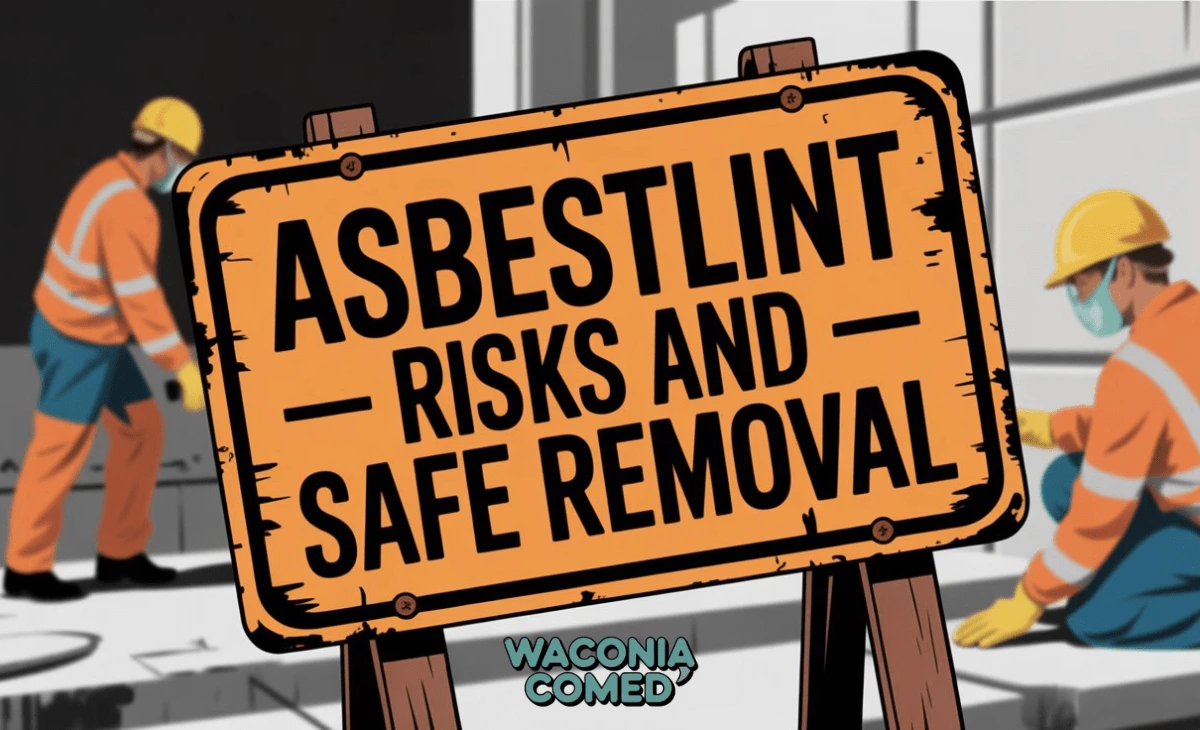Asbestos is more than just a construction hazard; it’s a silent health threat that can linger for decades without detection. For homeowners, builders, and safety officers, understanding asbestlint is crucial because exposure can lead to severe respiratory diseases, some of which are irreversible. This microscopic fiber was once praised for its durability and fire resistance, yet today it’s one of the most regulated materials worldwide. Knowing what asbestos is, where it hides, and how to manage it safely can literally save lives.
What is Asbestlint?
Asbestlint refers to the fine, microscopic fibers released from asbestos-containing materials (ACMs). These fibers are invisible to the naked eye and can remain airborne for hours, making inhalation a serious risk. Historically, asbestos was used in roofing, insulation, floor tiles, and cement products due to its resistance to heat, fire, and chemicals. Unfortunately, once damaged or disturbed, asbestos poses long-term health dangers.
Why Understanding Asbestlint Is Critical
The danger lies not in intact asbestos materials but in airborne particles. Once inhaled, these fibers can lodge deep into lung tissue and remain there for life. Awareness ensures that those working in renovation, demolition, or maintenance avoid exposure risks.
Health Risks of Asbestos Exposure
Asbestos exposure can lead to:
Asbestosis: A chronic lung disease causing scarring and breathing difficulties.
Lung Cancer: Significantly higher risk for smokers and exposed workers.
Mesothelioma: A rare but aggressive cancer affecting the lining of the lungs or abdomen.
The health effects may take decades to appear, which makes early detection and prevention even more essential.
Where Asbestlint Is Commonly Found
You might encounter asbestos in:
- Ceiling and floor tiles from pre-1990 constructions
- Pipe insulation and boiler rooms
- Roofing sheets and shingles
- Cement siding and wall panels
Homes and buildings built before asbestos bans are the most likely sources.
Signs You Might Have Asbestos in Your Property
While you can’t see asbestos fibers, certain materials in aging buildings are high-risk. Crumbling insulation, cracked floor tiles, and damaged cement panels are potential sources. The only way to confirm is through professional asbestos testing.
Safe Removal vs. Encapsulation
When dealing with asbestos, two strategies exist:
Encapsulation: Sealing the asbestos material to prevent fibers from becoming airborne.
Removal: Completely taking out the asbestos material under controlled conditions.
Both require licensed professionals with specialized protective equipment.
Step-by-Step Guide to Safe Asbestos Removal
1: Hire a certified asbestos inspector to assess the property.
2: Obtain necessary permits and comply with local regulations.
3: Set up containment areas with plastic sheeting and negative air pressure systems.
4: Wear proper PPE, including respirators and disposable suits.
5: Wet the asbestos material before removal to reduce dust.
6: Double-bag waste in labeled asbestos disposal bags.
7: Transport to an approved asbestos disposal facility.
Legal Regulations Around Asbestos
Many countries have strict asbestos control laws, including mandatory inspections before renovation and legal disposal requirements. Non-compliance can result in heavy fines and legal action.
Tools and Safety Gear for Asbestos Management
HEPA vacuum cleaners for cleanup
Disposable coveralls and gloves
Full-face respirators with P100 filters
Air monitoring devices to ensure fiber levels remain safe
Why DIY Asbestos Removal Is Dangerous
Attempting removal without training not only risks personal health but can also contaminate the entire property. The cost of professional removal is minimal compared to lifelong medical treatment.
Real-World Case Study: Workplace Asbestos Exposure
In 2018, a renovation crew unknowingly disturbed asbestos ceiling panels in an old warehouse. Within hours, airborne fiber counts spiked, forcing the site to close for decontamination. The incident resulted in multiple workers filing occupational health claims highlighting the need for pre-renovation asbestos surveys.
Preventing Asbestos Exposure in Homes
Regular inspections, careful handling of old materials, and hiring certified asbestos professionals are the best defenses against exposure. Even simple actions like avoiding drilling into old walls can prevent fibers from being released.
Best Practices for Construction Companies
- Train staff in asbestos awareness.
- Maintain updated asbestos registers for all properties
- Use only certified contractors for high-risk jobs.
- Ensure strict compliance with safety laws
Asbestos in Older Vehicles
Many classic cars used asbestos in brake pads and clutches. Mechanics working on older vehicles should take similar precautions as those used in construction work.
Disposal Methods for Asbestos Waste
Asbestos waste must be double-bagged in heavy-duty polyethylene, labeled, and transported to approved landfills. Never mix asbestos waste with regular trash.
Environmental Impact of Asbestlint
When improperly disposed of, asbestos can contaminate soil and water, posing long-term environmental hazards. Safe disposal protects both human health and ecosystems.
Cost of Professional Asbestos Removal
Removal costs vary based on contamination level, material type, and property size. On average, homeowners may expect $1,500 to $3,000 for moderate removal projects.
Asbestos Awareness in Schools and Public Buildings
Schools built before the 1990s often contain asbestos materials. Regular inspections and maintenance are essential to keep students and staff safe.
Debunking Common Myths About Asbestlint
Myth: If you can’t see asbestos, it’s not dangerous.
Fact: The microscopic nature of asbestos fibers renders them invisible to the unaided eye.
Myth: Painting over asbestos makes it safe forever.
Fact: Paint can wear down, exposing fibers again.
Global Efforts to Ban Asbestlint
Over 60 countries have banned asbestos, but many developing nations still use it in construction. International advocacy continues to push for a worldwide ban.
Future Technologies for Asbestlint Detection
Advances in portable detection devices and fiber-binding sealants offer hope for safer and faster asbestos management.
FAQs
What is asbestos made of?
It consists of microscopic asbestos fibers released from damaged materials.
How can I tell if my home has asbestos?
It is recommended to have a professional asbestos test conducted, as a visual inspection alone is insufficient.
Can I remove asbestos myself?
No, it’s illegal in many areas and highly dangerous without proper training.
How long do asbestos-related health effects take to appear?
Diseases can take 10–40 years to develop after exposure.
Is asbestos dangerous if undisturbed?
Not usually danger arises when fibers become airborne.
What industries have the highest asbestos exposure risks?
Construction, shipbuilding, and automotive repair industries are among the highest-risk sectors.
Conclusion
Understanding asbestos is not just about following regulations, it’s about protecting lives. With its severe health risks and long latency period, prevention is the best approach. Whether you’re a homeowner, a contractor, or a building manager, taking the right precautions today will safeguard your health for decades to come. If you suspect asbestos in your property, contact a certified asbestos removal specialist immediately and avoid disturbing the material.

